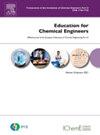Engineering process safety research instrument: Assessing students’ moral reasoning in process safety contexts
Abstract
Process safety decision making is a key component of undergraduate chemical engineering education. Despite this, there are no existing survey instruments designed to measure students’ moral reasoning in the context of process safety decision making. The Engineering Process Safety Research Instrument (EPSRI) was developed to address this deficit in process safety assessment. The EPSRI was modeled after existing moral reasoning instruments including the DIT2, EERI, and ESIT. The process safety scenarios included were drawn from personal experience and reports from the Chemical Safety Board. Each scenario in the instrument was followed by a decision prompt and 12–15 considerations. The EPSRI went through content validation with chemical engineering industry practitioners and chemical engineering faculty members. Subsequently, three rounds of exploratory factor analysis were conducted to finalize the instrument design before a final confirmatory factor analysis was completed to ensure validity and reliability of the instrument. Completion of the exploratory factor analysis resulted in five dilemmas with 9–12 considerations each that loaded onto pre-conventional, conventional, and post-conventional reasoning constructs according to Kohlberg’s moral development theory. Confirmatory factor analysis reaffirmed the validity and reliability of the instrument and its ability to measure chemical engineering students’ moral reasoning within process safety contexts.

 求助内容:
求助内容: 应助结果提醒方式:
应助结果提醒方式:


